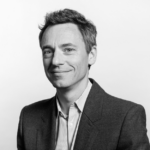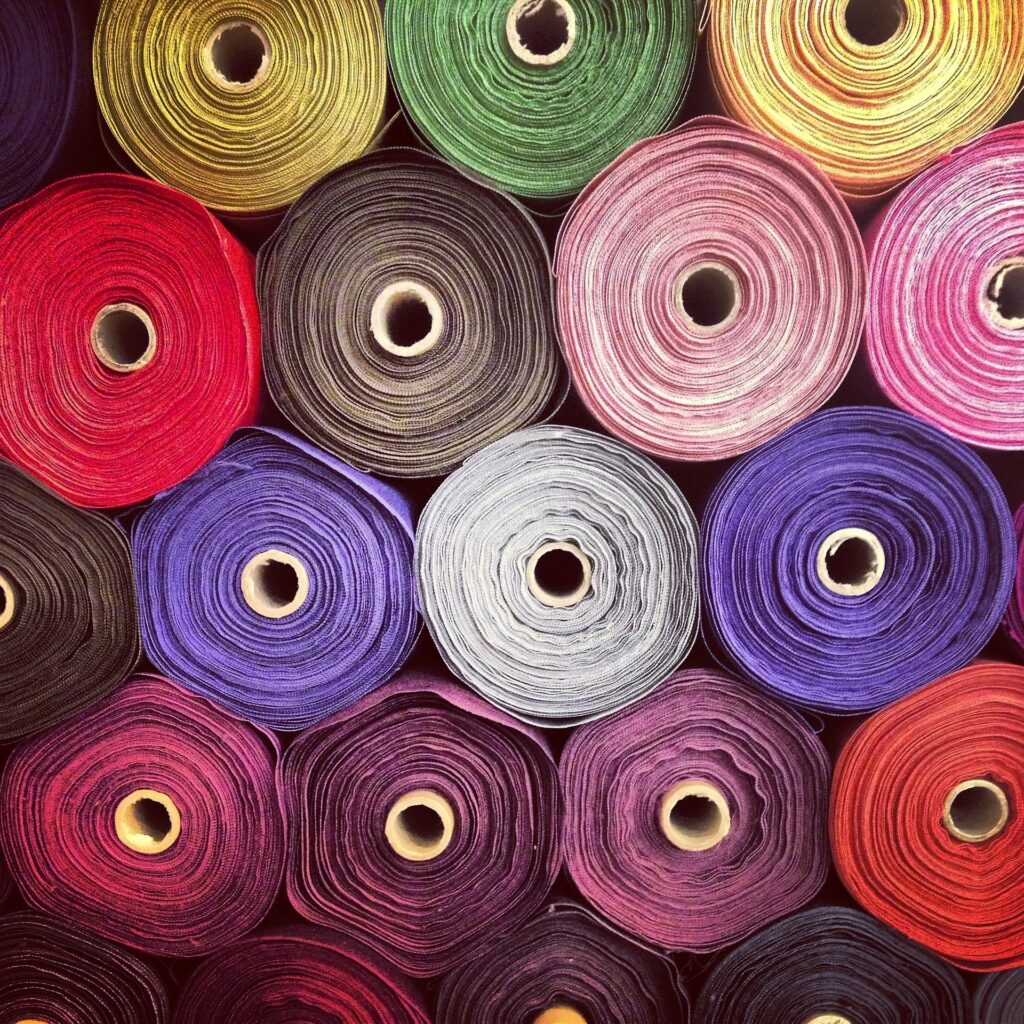
Dear Fashion: Let’s Step Up and Get Aligned
In a recent opinion editorial with WWD, CEO Colin Browne argues fashion needs to take more serious and coordinated action on sustainability. Read the highlights here!
In March, Cascale and Worldly held a webinar, “Navigating Legislation & the Higg Index: Higg Product Tools with PEF and more.” In this blog, we share the recording, highlight key takeaways, and address submitted questions during the session.

Key Takeaways
“The PEF methodology is likely to play an important role in the future EU product and consumer law legislation. The Higg Product Tools methodology is well-positioned for alignment with Product Environmental Footprint (PEF)/PEF Category Rules (PEFCR), and the Higg Product Tools can support members in navigating evolving legislations and provide guidance in their compliance journeys.” –Elisabeth von Reitzenstein, senior director of policy and public affairs
“France has been, and probably will be for the foreseeable future, a frontrunner on sustainability legislation….The French label is based on a type of PEF. It has very strong alignment with the European Product Environmental Footprint principles. One difference on durability is that the French Methodology also includes ‘emotional durability’ to a more committed extent than the European one. This proves again that a common method on PEF is important…Another new French initiative is a draft bill targeting fast fashion and sometimes ultra-fast fashion… Also on the European level, France is fighting its corner on these issues. At a Council of the EU meeting on March 25, it called, alongside Sweden and Denmark, for an EU-wide export ban of hazardous textile waste to developing countries.” – Elisabeth von Reitzenstein, senior director of policy and public affairs
“Through our partnership with Cascale, Worldly is paying close attention to this regulatory landscape and what our customers need in order to prepare and report on their sustainability performance and progress. My team meets at minimum weekly with Cascale to get deep into the weeds on PEF, how it’s evolving, and what it means for our tools and the solutions we’re delivering. The Cascale team also helps us understand the challenges the industry is facing firsthand and ways to address it in the tools. Data is going to play a critical role in many, if not all, of these reporting requirements.” – Paula Bernstein, senior data manager, Worldly
“The concept of accessibility is really key for the Product Tools because we want a variety of users with different levels of LCA knowledge, as well as data availability to produce consistent environmental product footprint results.” – Quinten Geleijnse, manager, Higg Product Tools and lifecycle assessments
“Like the rest of the Higg Index Tools, we don’t want the sole purpose of the tools to be compliance – the tools should be going beyond regulation. We’re not just trying to have a PEF-compliant calculator. That is not ambitious enough to get the industry on track to where it needs to be. [The Higg Index] needs to be aligned with PEF, at minimum for compliance, but we do need to go beyond that.” – Joel Mertens, director, Higg Product Tools
“There are a lot of commonalities between Higg Index Product Tools, PEF, and France’s Ademe methodology but we do expect that even with the same product information, it is very likely you will have different results depending on which methodology you’re calculating to or which region you’re calculating to…One of the important things is while there are differences in the results, the impact categories, the data needs, there is a way to bring this all together, and that is the hub concept.” – Mertens
“One of the key aspects here is the difference between a footprint calculation and a footprint study, or LCA study. Our tools are calculating an environmental footprint of a product. An LCA study is distinct from the footprint calculation. There are additional requirements that have to be done to take you to that full study level, including a report and verification.” – Mertens
“PEF is an implementation of ISO-1440 and 44 standards. There are study requirements associated with that that I think get lost in the narrative. As to other tools in this space, the one thing I will say right now is there is not a final PEFCR for apparel and footwear. There are a lot of claims and misunderstandings as to what you can say in terms of compliance to PEF and PEFCR, and there’s no such thing at this point.” – Mertens
Questions Answered
On the webinar, speakers discussed relevant EU legislation and initiatives, including:
These regulations relate in different ways to the Product Environmental Footprint (PEF) method and product footprinting in general. CSRD requires a thorough assessment of an organization’s impacts, risks, and opportunities, and specifically mentions PEF as a way to assess these. In addition, the calculation of scope 3 emissions is required under ESRS E1, for which LCAs and/or PEF studies are useful. ESPR will likely require environmental impacts to be communicated to external stakeholders through the Digital Product Passport, for which PEF and LCA studies can be used. The European Commission proposal for the SGCD sees a more diminished role for PEF in its current form than initially foreseen. Although PEF might not become a mandatory requirement itself under SGCD, the more simplified procedure now pursued may include a presumption of conformity for environmental claims that are based on recognized methods, such as PEF. The French labeling law is based on calculations obtained from a central database run by Ecobalyse and the Agency for Ecological Transition (ADEME). This method is inspired by PEF but has some noticeable differences.
The PEF category rules (PEFCR) contain specific rules for product categories that complement the PEF methodology. The rules direct focus to the parameters relevant to that specific product group, further standardizing the methodology. The Technical Secretariats (TS) of the EU develop these PEFCRs, and Cascale coordinates the TS developing the PEFCR for Apparel & Footwear, which includes determining the product-specific methodology and primary data requirements. The TS does not determine what secondary datasets are to be used and has to stay in line with the general PEF methodology. The PEFCR is expected to be finalized in Q1 of 2025 and is currently in its consultation phase.
The Higg Product Tools aim to guide product eco-design decisions by providing reliable, high-quality data. Given the legislative developments and the changing data requirements that they cause, the Product Tools should evolve accordingly. Our objective is to develop the Product Tools as a hub that allows different users (with different levels of data availability and LCA knowledge) to compute different types of results for different purposes. This means users can continue to identify impact hotspots and calculate scope 3 emissions, while we expand the tools’ functionalities to allow for PEF calculations. It is important to note that PEF compliance entails more than calculations only as PEF requires an extensive study report that has to be verified by a third party.
Some steps towards PEF-aligned calculations have already been taken by Cascale and Worldly. The current Product Module methodology was developed in alignment with the 2021 version of the PEFCR. This means the Product Tools are already well set up to expand towards PEF-aligned calculations. The team has mapped the key remaining differences between the current Product Tools methodology and emerging regulatory frameworks. This exercise informs Cascale’s product information Member Expert Team (MET) that currently helps define the product-relevant information fields the Product Tools need to contain to align with the data requirements of various frameworks, including PEF, ADEME, and the DPP. As indicated by the workstream flow chart below, Cascale will begin integrating the ADEME and PEF calculation methodologies with the Product Tools when they are finalized. In the meantime, work with the Product Information and Product Impact MET and continue to develop the tools’ hub functionality.

Cascale is working with Wordly to create a harmonized set of information fields for the Product Tools, containing all required information from the different legislative frameworks and distinguishing between mandatory, recommended, and optional data points. This allows users to compute different types of results based on a single set of information and enables the provision of at least some results when limited data is available. Cascale will also expand its current list of five impact categories to the 16 impact categories specified in the PEF methodology. To enable different result types to be computed, different calculation methodologies will have to be integrated into the Product Tools, some of which rely on different datasets than those currently used in the tools. Cascale is working together with Wordly to allow for parallel impact calculations and add these new (EF) datasets to the tools.
Please note that the visual is taken from the webinar slide deck and the timeline reflects the March 27, 2024 webinar date. Depending on when you are viewing this blog post, the visual may be out of date.
Cascale and Worldly are working together to expand the Product Tools to enable users to select the energy mix used to manufacture their products. This will ensure the country or facility-specific energy mix is considered in the calculations, providing more precise impact calculations. A next step will be to connect the Higg Product Tools with the Higg Facility Environmental Module (FEM) to enable the sharing of facility data to be used for product impact calculations.
While many of our members can and are already using the product tools for homeware and home textiles, PEF currently is explicit for “Apparel and Footwear.” The sectors the EU Commission has identified for PEF are the following:
However, the Product Tools may still be used to assess adjacent products such as home textiles. Even our current Product Module tool has an option for an “other” product category, which is being used by some members to assess these types of products.
If you have any remaining questions, we invite you to email us at marcomm@cascale.org.
Discover how a leading international clothing retailer utilizes Higg FEM and Higg MSI to shape their decarbonization strategy and pave the way for meaningful change.

— Dan Roe, Climate Change Programme Senior Manager, at Primark.
Primark, a leading international clothing retailer employing over 75,000 people in 16 countries, launched Primark Cares, their sustainability strategy, in 2021. Over the past three years, the company has focused on developing a decarbonization program for its value chain, with their headline target looking at a 50 percent reduction in absolute Scope 1, 2, and 3 emissions by 2030 from an FY19 baseline. A significant milestone, Primark’s science-based targets received validation from the Science Based Target initiative (SBTi) in 2023, showcasing their commitment to align with global efforts to combat climate change.
In addressing emissions from their own operations, the company committed to reducing energy use in their retail locations and incorporating renewable energy. However, a substantial 97.5 percent of their base year carbon emissions occurred in their supply chain. As a result, Primark is focused on collaborating with suppliers to address emissions and reduce their carbon footprint. Utilizing the Higg FEM and Higg MSI tools enables Primark to understand and measure the environmental impacts of their supply chain.
The Higg FEM serves as a key source of supply chain primary data, empowering Primark to calculate a more precise carbon footprint. This tool captures the outcomes of emissions reduction initiatives targeting facilities in their supply chain and demonstrates progress toward their overarching decarbonization target. Notably, in 20221, 1,083 of Primark’s supplier facilities completed the Higg FEM self-assessment, with 590 sites undergoing verification of their self-assessments and achieving an average score of 56 percent. These scores offer valuable insights, enabling factories to pinpoint opportunities for enhancing environmental performance. In addition to the Higg FEM, Primark also leverages data and insights from the Higg MSI to calculate supply chain emissions. This tool provides valuable LCA data specific to the materials and goods procured by Primark.
Since joining Cascale in 2015, Primark has worked with their supply chain partners to adopt the Higg Index to assess environmental impact. With the roll-out of the Higg Index across their supply chain, the company embraces a standardized measurement of environmental sustainability performance, enabling continuous improvement efforts.
1 Figures refer to Higg FEM modules covering 2022 calendar year data.
Read how this American-based performance athletic company uses Higg Product Tools to assess their environmental footprint.

— David Kemp, Director of Corporate Responsibility, Brooks Running
Brooks Running harnessed the power of the Higg Product Tools, including the Higg Materials Sustainability Index (MSI) and Higg Product Module (PM), to gain insights into its environmental impact and build strategies to achieve its climate and environmental commitments. The company used the tools to meticulously assess the impacts of both the raw materials (Tier 4) and processing stages (Tier 2 and 3) that contribute to its product ecosystem.
The Higg Index tools are fueled by collaboration. Brooks Running’s dedicated corporate responsibility team worked closely with suppliers to collect material-specific information – from composition and raw material type to dyeing and finishing methods. In instances where suppliers did not provide enough information, the team utilized the Higg MSI’s default values to ensure comprehensive coverage. Through this work, they were able to assess their environmental impact and identify which materials aligned best with their Planet 2030 commitments. The resulting reporting provided Brooks Running with a more accurate emissions factor for each material’s global warming potential, which was used to improve the accuracy of the company’s corporate Scope 3 Greenhouse Gas (GHG) Protocol emissions reporting.
In addition to their use of the Higg MSI, Brooks Running continued to scale its adoption of the Higg PM – entering footwear and apparel materials into the Higg MSI in order to evaluate the environmental impact of footwear and apparel styles through the Higg PM.

Joël Mertens, director Higg Product Tools Sustainable Apparel Coalition, joined a recent GreenBiz webcast sponsored by Environmental Defense Fund to discuss “How Circularity Can Help Advance Your Net Zero Strategy.” Hosted by Kori Goldberg, circular economy manager at GreenBiz, additional speakers included Andy Ruben, founder and executive director at Trove, Pete Edmunds, sustainability director at Deloitte, and EDF’s Thorfinn Stainforth, senior policy analyst at Environmental Defense Fund, and Elizabeth Strurcken, managing director.
The conversation was inspired by a new report from EDF and Deloitte, which outlines how companies can gain value and advance net-zero goals by transitioning to circular strategies – including reaching new markets and advancing climate outcomes.
After Sturcken introduced the report as the third in a collaborative series with Deloitte intended to help businesses make tangible progress towards their net-zero goals, Edmunds shared industry-specific circularity strategies for the textiles, packaging and automatic industries. He highlighted Lululemon’s plant-based nylon and the Loop reverse logistics programs, as well as the automotive industry’s shift to mobility as a service and battery reprocessing to meet demand from the growing EV market. Then, Ruben discussed a recent study on which Trove collaborated with Worldly, the exclusive licensee of the SAC’s Higg Index Tools, to determine the carbon savings of resale in comparison to rental and subscription.
Mertens emphasized the importance of pre-competitive collaboration in moving from commitment to action, stressing the success of this model in developing the Higg Index Tools. He shared that elements of circularity are embedded in the Higg Product Tools and provide a solid foundation for brands exploring circularity. However, he cautioned that brands should be careful about communicating circularity to consumers in the absence of impact measurements, as this can be construed as greenwashing.
Finally, Stainforth outlined circular policy developments in the EU, including their global impact, and three ways that companies can move faster and further on circularity.

SAC executives Jeremy Lardeau, Vice President Higg Index, and Joyce Tsoi, Director, Collective Action Programs, APAC, presented at Fashion Summit (HK), the sustainable fashion event funded by Create Hong Kong and organized by the Clothing Industry Training Authority (CITA), in support of the 2024 theme: “Actions to the Sustainability Journey.” After opening speeches from Richard Cheng, Chairman of Fashion Summit (HK) 2023, Kevin Yeung Yun-hung, GBS, JP Secretary for Culture, Sports and Tourism, HKSAR Government, Hon. Sunny Tan, Member of the HKSAR Legislative Council (Textiles & Garment), and Yang Xiaodong, Vice President of the China Garment Association, Jeremy Lardeau, Vice President Higg Index, offered a keynote presentation on sustainability analytics in the apparel industry.
Lardeau initially shared background information about the SAC, the global multi-stakeholder nonprofit alliance that represents a diverse global membership of over 280 members – about 50% of the apparel and textile industry – in 36 countries. Lardeau explained that over the past two years, the organization has seen the greatest amount of growth, demonstrating the collaborative momentum of the industry coming together to address systemic challenges and co-develop solutions with an approach based in equal partnership.
Lardeau explored how the SAC’s work is anchored by the Higg Index, a suite of tools that measures social and environmental impact through five core tools based in three key categories: two Higg Product Tools and three Higg Facility Tools. “Developed in collaboration with our members, and employed throughout the decade as working tools achieving measurable sustainability goals, the Higg Index stands today as the leading example of end-to-end sustainability measurement index, for any industry,” Lardeau said. “These tools have matured into comprehensive, robust offerings ready to scale and form a template for our industry’s pursuit of impact improvements. Nonetheless, they will continue to evolve, as science improves and our understanding of the industry’s challenges deepen, allowing us to support our members and the industry.”
He then shared examples of how the tools serve the industry:
Finally, Lardeau closed with a challenge: “How do we finance, enable and execute these interventions, in a way that is fair and equitable across the value chain partners?” Building on this idea, Joyce Tsoi, SAC’s Director, Collective Action Programs, APAC, moderated a panel hosted by the Clothing Industry Training Authority that featured Delman Lee, Vice Chair of TAL Apparel Ltd. and SAC Immediate Past Board Chair, Andrew Lo, CEO of Crystal International Group Ltd., and Teresa Yang, Vice Chairman of Esquel Group.
As initial framing, Tsoi shared that companies around the globe are making bold commitments to combat climate change: A recent Science Based Target Initiative (SBTi) report shows the highest number of companies set targets on record in 2022 alone than the entire seven years prior. And although an annual 4.2% emissions reduction is required for a 1.5ºC alignment for science-based targets, it was found that a typical SBTi-approved company has set even more ambitious goals, with a linear rate of 8.8% scope 1+2 reductions per year. In order to achieve these goals, Tsoi shared, companies will need to secure full organizational support for the company’s decarbonization priorities to achieve a just and equitable low carbon transition.
As all three panelists represent companies that have committed to long-term net zero goals by 2050, Tsoi asked questions that allowed them to share the pillars of their climate action programs, how they are incentivizing and empowering staff at all levels to take climate action, and how they are building collaborative ecosystems across organizations, sectors, and value chains to achieve a just and equitable low-carbon transition.
We are grateful to KPMG for their work in developing this report, which captures the invaluable insights and recommendations derived from the expert review of the Higg MSI and Higg PM tools.



The SAC was founded on the idea of evolution. Through ongoing updates, our tools become more and more powerful at helping our members transform their businesses. Today, we continue to demonstrate that core concept with the publication of the first report from our Higg Index Review process, which is downloadable here. The report addresses the Higg Product Tools – the Higg Materials Sustainability Index (MSI) and the Higg Product Module (PM) – and plays an important role in helping us reassess and evolve our product life cycle tools in order to best serve the industry.
But change doesn’t happen in a vacuum: We had to listen and learn from you, our community. To do so, we engaged KPMG, which coordinated the creation of a panel of experts that represent a cross-section of the industry; KPMG led the process of generating the report, ensuring that it remained unbiased and independent. All who participated brought insightful perspectives that triggered powerful conversations about how we — the SAC, and the apparel and textile industry — can evolve the tools to drive greater impact. We were again reminded that our tools, while tailored to this industry, must respond to the global call to reduce social and environmental impacts as a whole and align with global industry standards.
With a broad range of representation from the expert panel, we welcomed the strengths that were acknowledged, including the tools’ alignment with ISO LCA phases to quantify and assess the environmental impacts of materials and products. But more importantly, the review process surfaced clear feedback and recommendations to improve these tools. We are taking these recommendations to heart and we have started evaluating how best to address each recommendation.
In some cases, the work is already underway.
We are re-working the Higg MSI data structure and leveraging the forthcoming Higg Facility Environmental Module (FEM) update, which will launch in September, to connect them and allow factory-specific data to inform Higg MSI data sets, and which will lead to improved geographical coverage and specificity within the Higg Product Tools. We’re also actively working to improve data quality within our background datasets (secondary data), specifically in cotton fiber and textile wet processing data. Through this effort, we’re working with supply chain stakeholders to determine the type of data that is available, outline data gaps, identify intrinsic differences due to geography, and build consistent LCA models that can show improvements over time. This is a process that we’ll continue to replicate with other materials and processing stages in the future.
The expert panel also recommended that our tools must align with EU Product Environmental Footprint (PEF) – an evolving LCA methodology, that aims to create a harmonized common framework for calculating and communicating impact — and we fully agree. We’ve long incorporated alignment to the Apparel & Footwear PEFCR into our strategy goals and methodologies. For example: Our requirement on including renewable energy is aligned with PEF, as is our methodology to calculate the water impacts.
In other cases, we believe we can implement changes in the next phase of regular tool updates.
For example, we will develop the recommended signals and warnings, as well as offering more education and training, to help users correctly and more effectively use the tools.
Finally, some recommendations will require a deeper process of stakeholder engagement and research to explore feasibility and practical application.
For example, the SAC is closely monitoring the progress made in ways to assess the full impacts of marine litter and microplastics in LCA data. Ultimately, the ongoing evolution of the tools means the SAC will continue to assess the recommendations over the coming months and how best to implement them in the tools’ development roadmap.
In 2024, we will be conducting independent reviews for the Higg Brand and Retail Module (BRM) and Higg Facility Environmental Module (FEM) tools. Due to the timing of these updates, the Higg Product Tools were reviewed first. The remaining Higg Index Review reports will be shared in full by the SAC once they have been finalized by the review panels.
Science isn’t static — and neither are we. We are committed to continued enhancement in order to arm the industry with the most robust, data-driven tools so that we can all stand behind decisions that are as socially responsible as they are environmentally sound. Finally, we are grateful for those who contributed their time and effort to the process of generating this report, as well as for the continued engagement of – and critical feedback from – our trusted members and partners.


The latest version of the Higg Materials Sustainability Index (Higg MSI) was released today by the Sustainable Apparel Coalition (SAC) and Higg Co and represents the single largest update to production processes submitted by the industry through the MSI Contributor portal since the Higg MSI was launched by the SAC in 2012. We are adding 15 new processes that were submitted through the MSI Contributor in 2020, increasing our total count of production processes submitted directly by companies from 50 to 65. These updates, combined with processes already available, contribute to the existing millions of materials options companies can review and access in the MSI.
The Higg MSI empowers designers and developers at brands, retailers, and manufacturers to compare life cycle assessment data between comparable raw material and manufacturing processes to inform and drive more sustainable design decisions. The tool can help designers understand the environmental impacts of the choices they make when selecting different processes between relevant material types. The tool measures five environmental impacts for both natural and synthetic materials: chemistry, global warming potential, nutrient pollution in water, water scarcity, and fossil fuel depletion. All background life cycle impact assessment data in the Higg MSI comes from ISO-compliant studies and reputable industry databases, primarily the GaBi database by Sphera. Once data is submitted, it is reviewed, verified, and scored by third-party experts.
By continuing to increase the pool of data contributed and shared, companies can leverage the Higg MSI to drive transformational change across their organizations and within the industry. Since the Higg MSI data is grouped into Material Categories and Production Stages, users can easily hone in on functionally equivalent raw material and process comparisons to guide decision making. For example, when a brand is designing a cotton t-shirt, its product team can consider which type of cotton best satisfies the company’s specific sustainability goals as well as the intended purpose of the garment, making more informed decisions to create sustainable products. Similarly, designers can evaluate the impacts of different types of recycled polyester among other synthetic material options.
New Updates
The Higg MSI is updated twice a year to reflect new and updated LCA data, new materials, and new manufacturing processes from suppliers in the footwear, apparel and textile industries. The update released today is the second update of 2020 — the previous update was in August. Today’s updates come from multiple geographies — including Asia, Europe, North America, and South America — and feature a total of more than 50 new natural and synthetic materials and processes that were submitted by industry stakeholders and sourced from leading industry databases.
In addition to the 15 new production processes submitted through the MSI Contributor portal, the latest version release of the Higg MSI now includes:
This update also enhances the tool’s transparency for Higg MSI users by adding direct links from data submissions to the websites of data submitters and links for documentation from background data (GaBi) when available and applicable.
Click here to view the full list of updates.
Call to Action for the Industry
Since the launch of the Higg MSI, the SAC has routinely invited and facilitated the submission of new data from various industry stakeholders. In order to drive collective action towards reducing the environmental impact of materials and increasing more sustainable material usage, the SAC invites Higg MSI users and materials experts to continue contributing material data to the tool’s growing library of materials.
In November, we began to strengthen efforts to solicit new and updated LCA data from industry partners to help ensure the best available external data inputs within the Higg MSI as part of our regular review process. We are encouraged by the ongoing conversations we’re having with industry partners, knowing that it will take all actors, working together across the value chain to transform the industry. This work continues and will be reflected in future data updates.
To learn more about how to submit data, please click here.